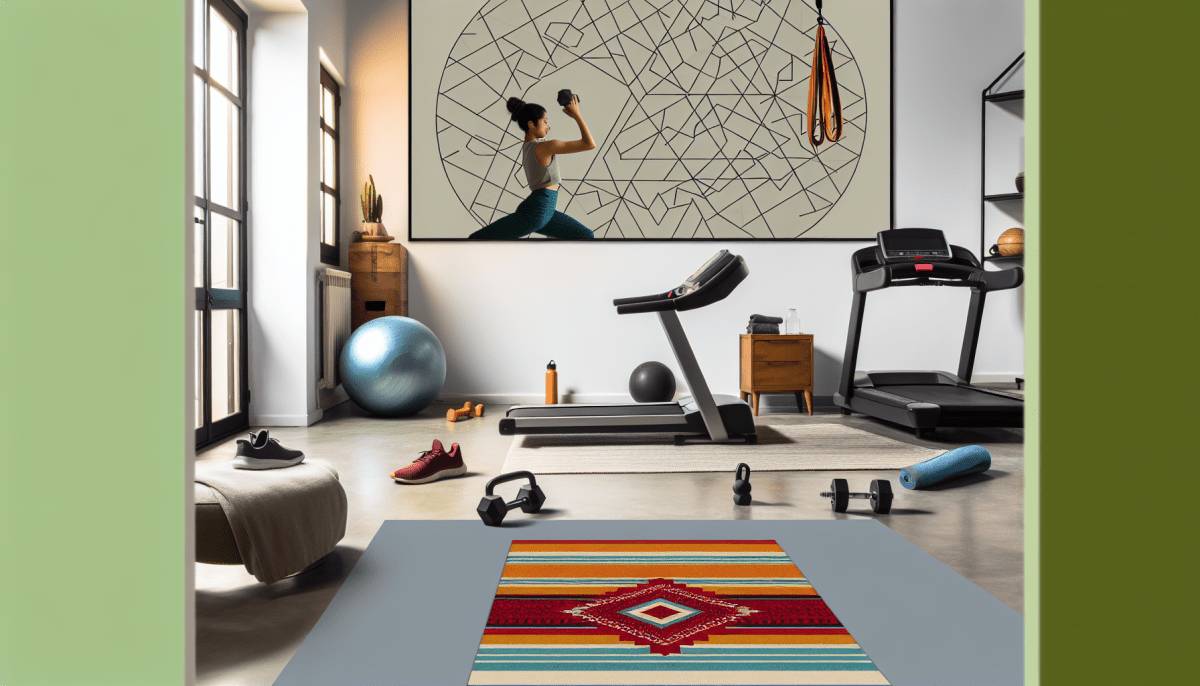Keeping your home gym tidy is key to ensuring safe workouts. When equipment or weights are scattered around, it increases the risk of tripping or falling. A little organization goes a long way in making sure your workouts remain injury-free.
Start by designating specific areas for each piece of equipment. Use shelves or storage bins for smaller items like bands and weights. Here are some simple ideas to keep clutter at bay:
- Use baskets or bins: Sweep up loose items and store them away. Clear storage bins let you see what's inside while keeping things neat.
- Wall hooks: Hang up your resistance bands or jump ropes. This keeps them visible and prevents them from being a tripping hazard.
- Equipment mats: Place mats under larger equipment like treadmills or bikes, which also helps contain smaller items within a defined space.
Regularly check your space to ensure it stays organized. Take a few minutes after each workout to put things back where they belong. A clutter-free environment not only looks nicer but also helps keep you focused on your fitness goals!
Invest in Quality Equipment
When setting up your home gym, you want to make sure you’re investing in quality equipment. This isn’t just about durability; it’s also about safety. High-quality gear is designed to minimize the risk of injury, so you can focus on crushing your workouts without worrying about equipment failure.
Look for reliable brands that prioritize safety features in their products. For example, weight benches should have sturdy frames and padded surfaces to support your body during lifts. Likewise, dumbbells and kettlebells should have a solid grip to prevent any slips. Trustworthy equipment often comes with warranties or customer reviews that can assure you of their quality.
Don't forget about those smaller safety items, too! A good set of mats can provide traction and cushioning, reducing the chances of slips and falls. Also, consider having some safety straps or racks for your weights. These can help secure your equipment, ensuring that it stays safely in place during intense workouts.
Even if you’re on a budget, remember that investing a little bit more in quality equipment now can save you from injuries and costly replacements later. Think of it as buying peace of mind while you work toward your fitness goals. You want gear that will stand the test of time and keep you safe as you get stronger.
Warm Up and Stretch Properly
When you’re ready to dive into your home workout, don’t skip the warm-up and stretching! Taking just a few minutes to prep your body can make a world of difference in how you feel and perform. Think of warm-ups as a way to gently wake up your muscles and get your blood flowing. Plus, they help reduce the risk of injuries.
Start with some light cardio to get your heart rate up. You might try marching in place, doing some jumping jacks, or even a quick jog around the room. Aim for about 5 to 10 minutes - just enough to feel a little warm and loosened up. This is the perfect way to signal to your body that workout time is on the horizon!
After your cardio, it’s stretching time! Focus on the major muscle groups you’ll be using. Here are some great stretches to consider:
- Quadriceps Stretch: Stand on one leg, grab your other ankle, and gently pull it towards your glutes.
- Hamstring Stretch: Sit down and reach for your toes. Keep your knees straight to really feel the stretch.
- Shoulder Stretch: Bring one arm across your chest, and use the other to pull it closer for a deeper stretch.
- Hip Flexor Stretch: Step one foot forward into a lunge, making sure your knee doesn’t go over your toes.
Holding each stretch for about 15-30 seconds will help improve your flexibility and prepare your muscles for action. Remember, don’t bounce! Just take it slow and breathe through the stretches to really get the most out of them. With this warm-up and stretching routine, you'll be all set to tackle your workout safely and effectively!
Know Your Limits and Listen Up
When it comes to working out at home, understanding your own limits is super important. It's easy to get caught up in the excitement of a new routine or push a little harder when you're feeling good. But overdoing it can lead to injuries that can sideline you for weeks or even months. Listen to your body—it knows what's up!
Before you start, do a quick self-assessment. Ask yourself:
- How am I feeling today? Am I tired or under the weather?
- Have I worked out just too hard lately?
- Am I trying a new move that I haven't mastered yet?
If you answered "yes" to any of those questions, it might be a good idea to take a step back. It's perfectly okay to skip a workout or modify it based on how you feel. Also, make sure to warm up before you dive into your routine—it preps your muscles and helps prevent injuries. And always cool down afterward; it helps your body transition back to a resting state.
Finally, don't hesitate to ask for help! Whether it's using proper techniques in your exercises or figuring out the right weights to lift, there’s a ton of information out there. Finding a buddy or checking in with a fitness expert can give you that extra guidance to workout smarter and safer.



